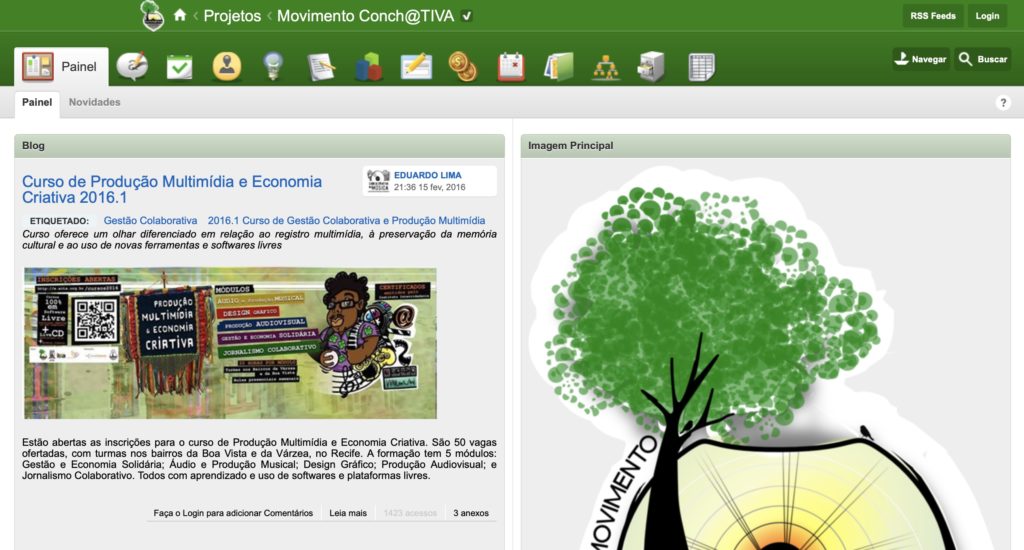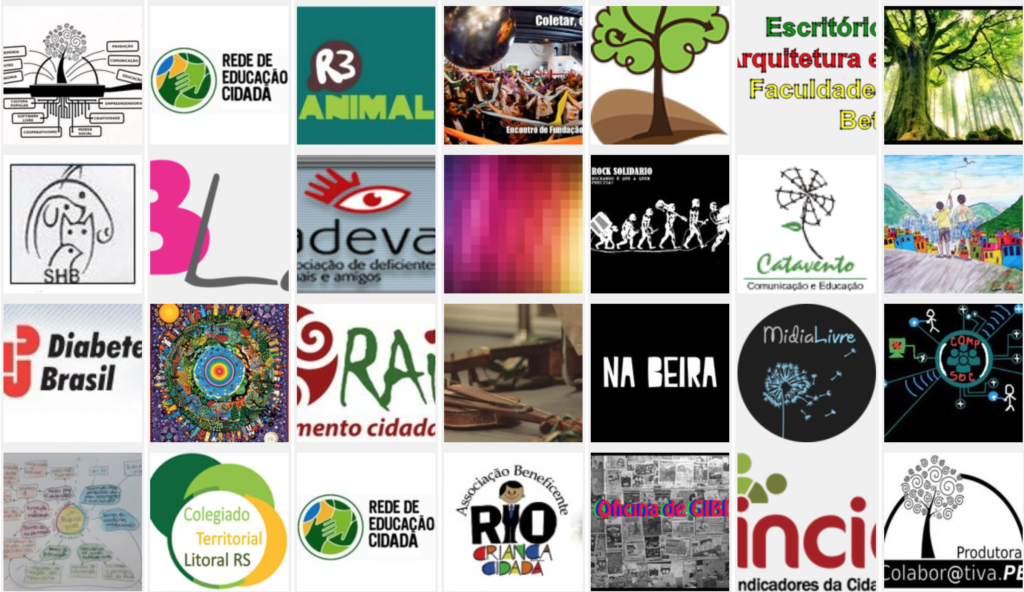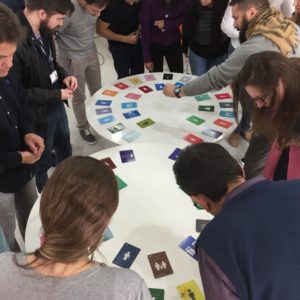Corais was launched in 2011 as the open innovation platform of Faber-Ludens Interaction Design Institute. Since 2012, it became an independent cooperative platform for cultural producers in Brazil, maintained by Instituto Ambiente em Movimento and developed by Frederick van Amstel as an outreach activity of his academic work.
An open design platform
Development started from Open Atrium, an open-source distribution of Drupal, the platform offers collaborative tools like project management, blog, real-time text editing, mind maps, and more. The initial aim was to support Open Design projects in Brazil, yet the Brazilian design community did not make use of it. Instead, cultural producers, activists, and teachers populated the platform with collaborative projects such as hackerspaces, cultural events, web ontologies, visual identities, and so on.

Corais was meant to be the “Github of design”, in analogy to the popular collaborative computer programing platform. The main challenge was to find the “code” to be shared since there was no widely accepted formalized way of describing design. Instead of defining a code and imposing on hosted projects, Corais offered infrastructure for every project to gradually define its own “code” to share. It was expected that the diverse contributions in the project would follow a certain design code at some point, even if ill-structured and tacit. The absence of a pre-defined code would also allow unexpected communities to bring their existing codes to the platform instead of requiring them to learn a new code to collaborate with a project.

A hybrid learning platform
In addition to hosting projects, the ecosystem includes a card set with Design Methods made to help planning meetings. Members of the team can organize the cards as a process, using their input/output info. Each card has a QRCode that points to a wiki page where the method is described in detail. Using these cards, codesigners can learn design in a hybrid analog and digital environment.


Corais was developed with the intention to facilitate learning design while doing it in teams, even if not physically colocated. Learners have the opportunity to design their own design process by combining the design knowledge shared by other projects. When a project stops for any reason, it can still contribute to future projects by leaving traces of their emergent structures. Since those structures are licensed under Creative Commons, cultural cannibalism is not prohibited. Actually, like in real coral reefs, cannibalism is encouraged to dead structures, which becomes the base for new structures. Corais can be conceived as an ecosystem that adopts an evolutionary development process, where collaboration — and not competition — selects the best structure available.
Corais has 277 wiki pages (many of them edited by Frederick van Amstel), which received a total of 2.7 million views from 2011 to 2020.
A digital culture platform
The community of cultural producers became very involved in Corais development since 2012. This community was struggling with organizing themselves without governmental support, which was plenty during Gilberto Gil’s lead of Brazilian’s Ministery of Culture. Gilberto Gil, who is also a pioneer in using Creative Commons to license artistic works, envisioned a network of organized producers working with free software, but not every group pursued the vision. Once his term was over and governmental support run out, these groups did not have money to pay the technological and spatial costs to organize.
Corais Platform was seen by Collaborative Cultural Producers as a virtual space to organize. They used the tools designed to support design to arrange their nomadic meetings, keep up with each other’s individual work, divide tasks, write together funding proposals, among other activities.
Corais became a major infrastructure for the Digital Culture movement, harboring more than 600 cultural production projects spread over Brazil. The projects range from theater operation to indigenous art, yet, they share a common origin in activities that were previously led by the State. These collectives sought in self-management an alternative way to make their projects viable despite the lack of money and leadership.

A cooperative platform
The platform pioneered the use of digital money to mitigate the budget cuts in government funding which severely affected the Digital Culture movement since 2014. The platform is designed and maintained by its users through a self-management approach, much like recent platform cooperatives in other fields. Inspired by Solidarity Economy, they designed their own currency system to protect their commons.
The producer Colaborativ@.PE was trying to use the spreadsheet tool to organize a Local Exchange Trading System (LETS) based on an alternative currency. The limitation of the spreadsheets led them to suggest a new tool in the platform for LETS, which they designed together with the developers based on the customization of available Drupal modules. Soon after its launch, the tool was used by another producer, a theater school that wanted to engage students in maintenance activities. This school is relying on this economic system for more than a year, with an average of 60 exchanges per month.

An open social innovation platform
Corais Platform was part of the European Living Lab Network. As a living lab, it enabled the joint experimentation between private, public, and grassroots organizations. Due to its focus on social issues, it was considered by a study conducted by Unisinos as an example of the emergent open social innovation.
References
Gonzatto, R.F., van Amstel, F.,and Jatobá, P.H.(2021) Redesigning money as a tool for self-management in cultural production, in Leitão, R.M., Men, I., Noel, L-A., Lima, J., Meninato, T. (eds.), Pivot 2021: Dismantling/Reassembling, 22-23 July, Toronto, Canada. https://doi.org/10.21606/pluriversal.2021.0003
Van Amstel, Frederick M.C., and Rodrigo Freese Gonzatto. (2016) “Design Livre: designing locally, cannibalizing globally.” XRDS: Crossroads, The ACM Magazine for Students, 22(4), p.46-50. https://doi.org/10.1145/2930871
Van Amstel, Frederick M.C.; Vassão, Caio A.; Ferraz, Gonçalo B. 2012. Design Livre: Cannibalistic Interaction Design. In: Innovation in Design Education: Proceedings of the Third International Forum of Design as a Process, Turin, Italy. https://fredvanamstel.com/publications/design-livre-cannibalistic-interaction-design

